He is very dashing in a plant
Then, how are you communities #Beautyofcreativity, and,
#insectsoftheworld along,
#photograghylovers
Weevil (Kumbang Pengerek), that's the name often called by farmers in our area, uniquely it is also one of the largest families in the Order Coleoptera because of its ability to adapt in almost all habitats in nature, and it is not surprising if it is found in every plant or it does not have to be choose cotton plant
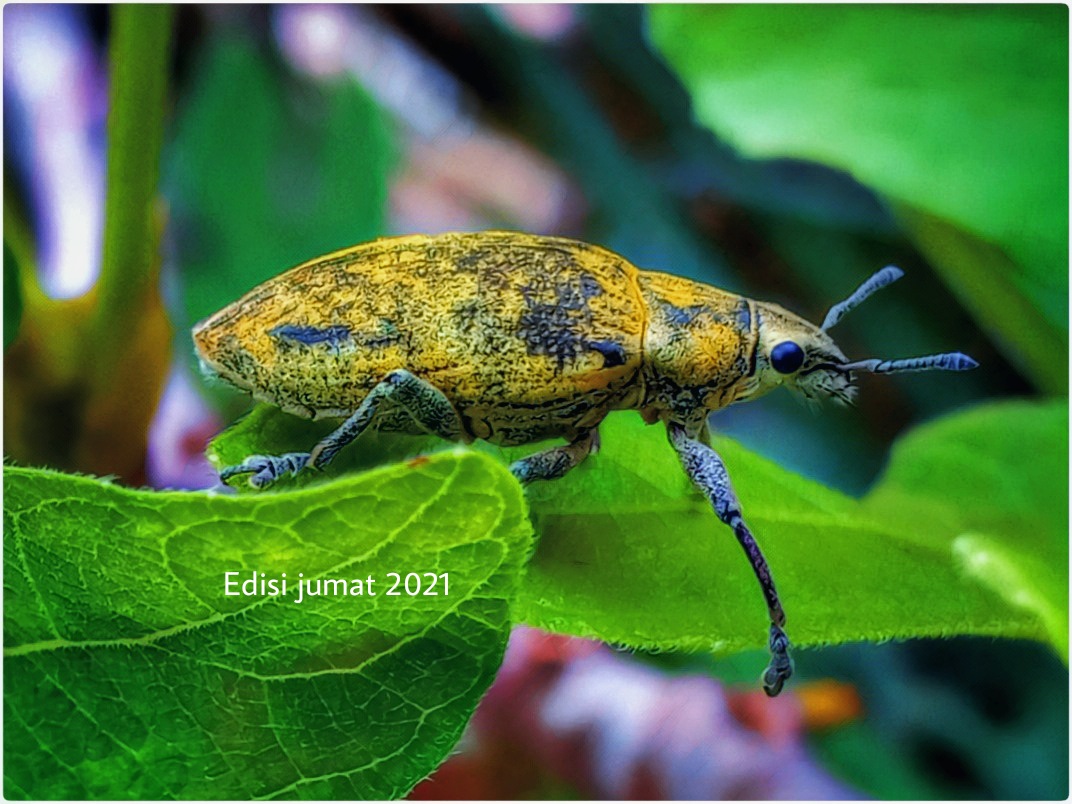

Whatever the name, what I see is a beetle that often makes plant growers, both fruit farmers and ornamental plant farmers hate and envy its presence, even though it is not as ferocious as other beetles that fall into the category of beetles, leaf shears (plant pests).
It can't be denied or avoided from the label that has been affixed... He is indeed a leaf destroyer in his own way, either by laying eggs, wrapping leaves, and sprinkling lime on each leaf, from each of his choices.
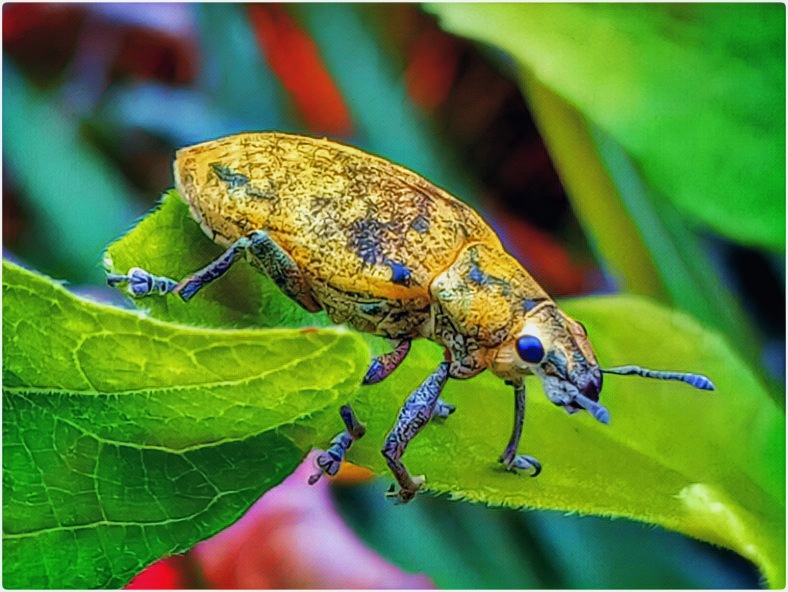
Although in the photos that have been uploaded here, it looks like the leaves are still intact and not damaged, this right was intentional by me to take some of the poses for beautiful pictures (without blurring).
While the leaves on both the left and right sides have been damaged, as a result of their nest-building activities in the Jatropha plant which looks dashing.
While in the jatropha tree which has just developed, or its height of about 50 cm is not inhabited by several other destructive insects, what is visible is only a few species of this one, if it is estimated that it has a number of about 20 adult beetles, while the other one looks a few eggs and baby hiding in its leaves.
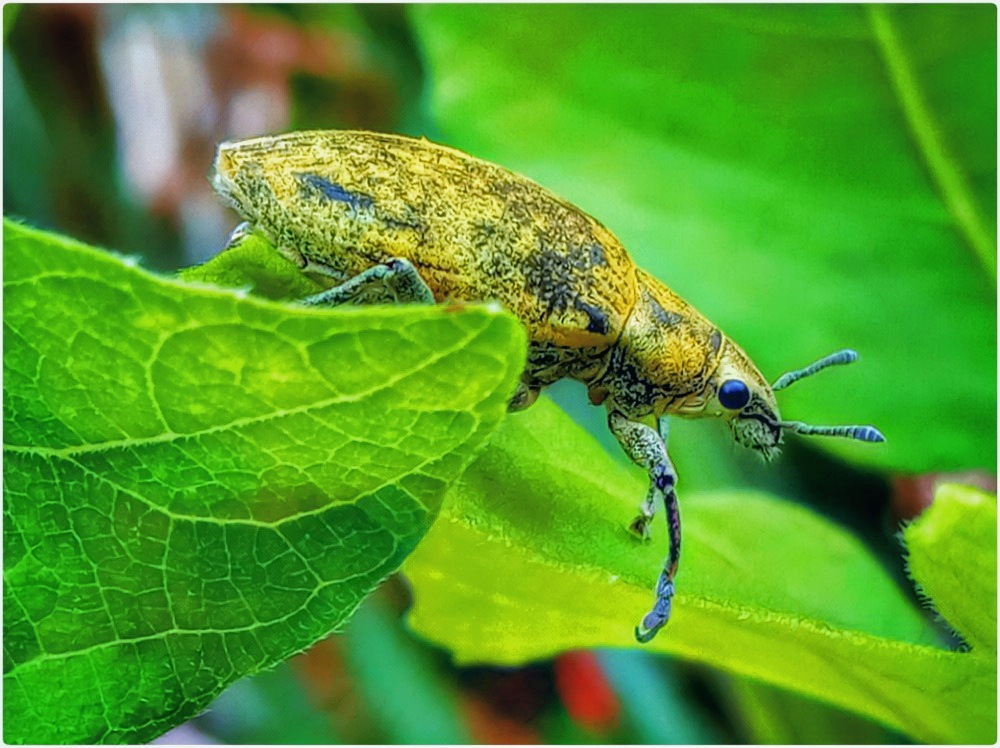
Kumbang Moncong
But people in our area often call it the snout beetle, this term or name refers to a face that has a snout, in general this face is often owned by every face of rodents, such as mice, and some animals that have similarities with it
In general, this species is included in the category of beetles, not insects, sometimes people often get it wrong in defining it, even though insects and beetles are often different from each other.
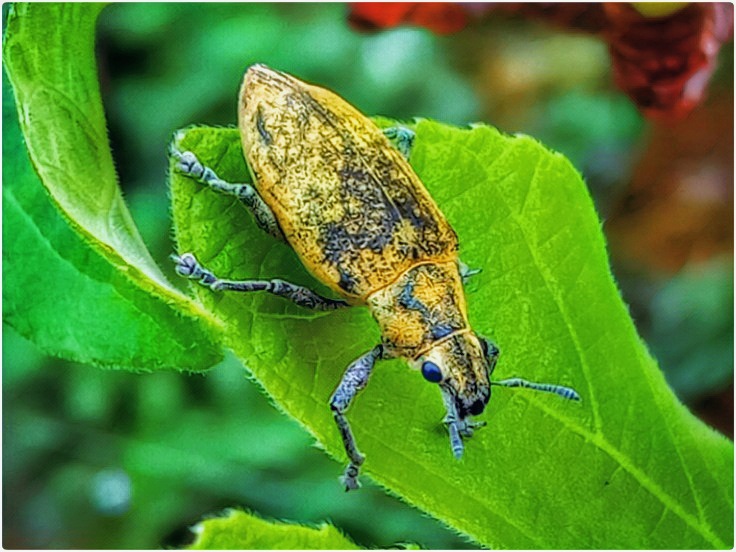
Basically, to distinguish between beetles and insects, you can pay attention to each important body part such as legs, eyes, and wings. While the number of legs beetles have 3 pairs of legs, and most of them have 2 pairs of thick wings that are layered between the hard wings (eletra) although they have smooth wings located under the upper wings, so do the vision beetles or they have 1 pair of eyes, located on the head.
While insects themselves have wings that are different from the thickness of the beetle's wings, compound eyes make them more flexible in detecting each color, although sometimes insects have many legs but many also have 2 pairs of legs, such as butterflies and wasps, or dragonflies, flies and several other species.
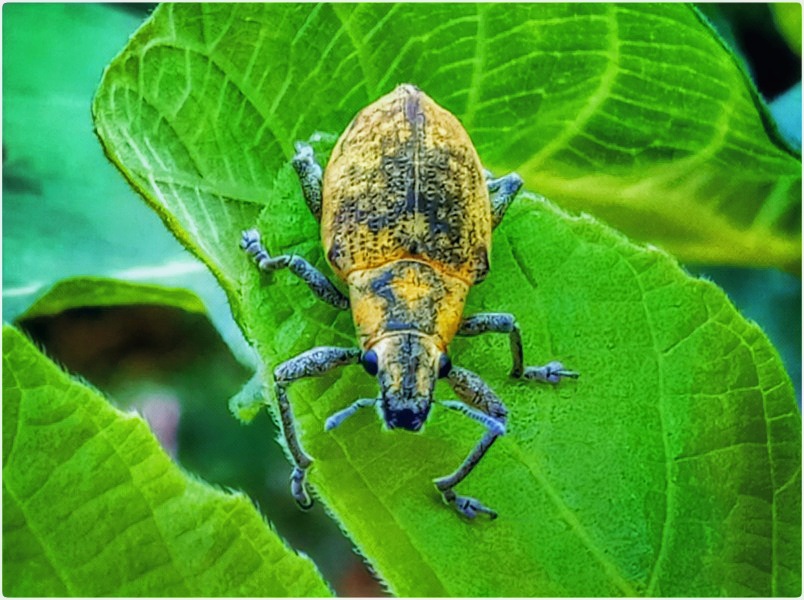
While most of the beetles themselves have 3 pairs of legs, which are located on the front, with a total of 1 pair, and 2 more pairs of legs on the back.
Every behavior that comes from each species has a striking difference even though it is a little, the point is the behavior that comes from each species that often distinguishes each of them.
While the behavior of this beetle, looks very slow from every activity so it is very easy to identify it, if they do not eat leaves and do not nest on any green plants, of course they are very rarely detected, this is influenced by their motion and silence.
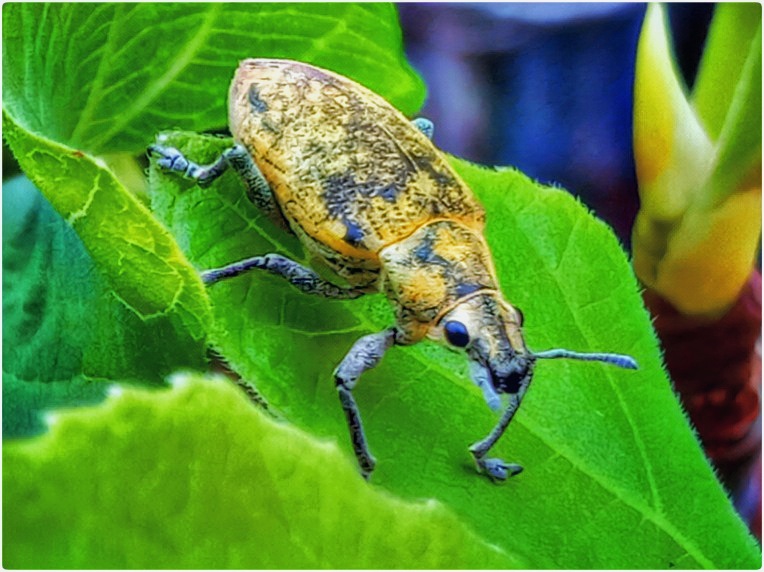
Able to adapt to any environment
Here they look very great, why? Being able to survive in any environment and situation, especially in our region, which is predominantly tropical, means that it has two seasons, namely the rainy season and the dry season. Their ability to adapt does not have to be in the forest, but in urban areas there are also them. The point is that where there are green plants, that's where they breed.
His ability here does not mean being able to survive in areas that have very cold temperatures such as the Antarctica continent and the like, because this region has very cold temperatures, except for certain animals that are able to adapt to that environment.
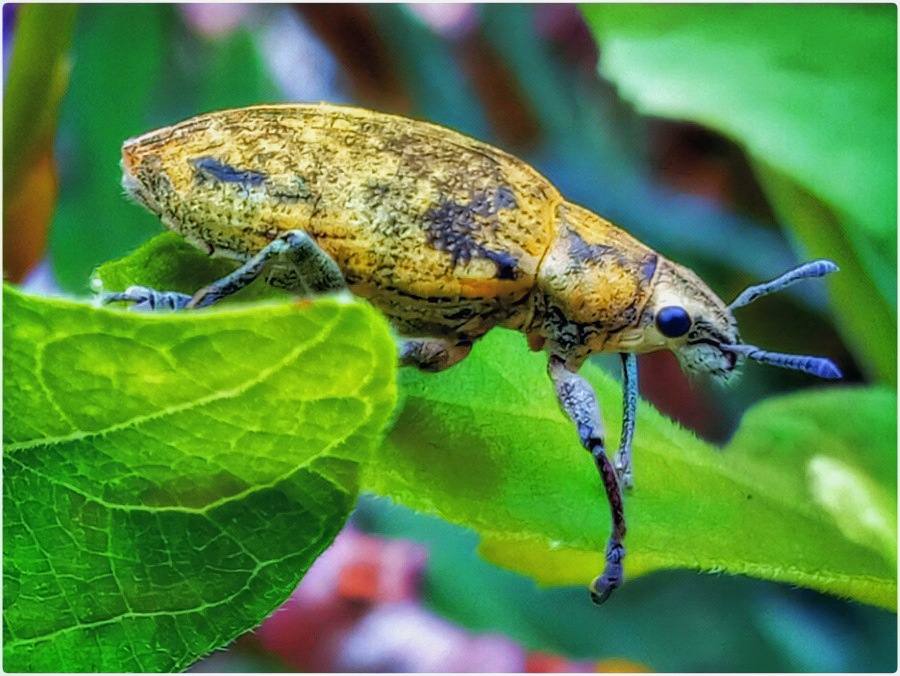
The meaning in the paragraph above is that, being able to adapt to all conditions in the tropics, they are often found in every or every existing tree and grow around both urban and rural areas. As long as the area grows green trees or plants.
They always look for plants that exist, especially in areas that are overgrown with wild plants, when away from the busyness of society in every activity or area that is rarely touched by humans, every plant that grows in the area is always there.
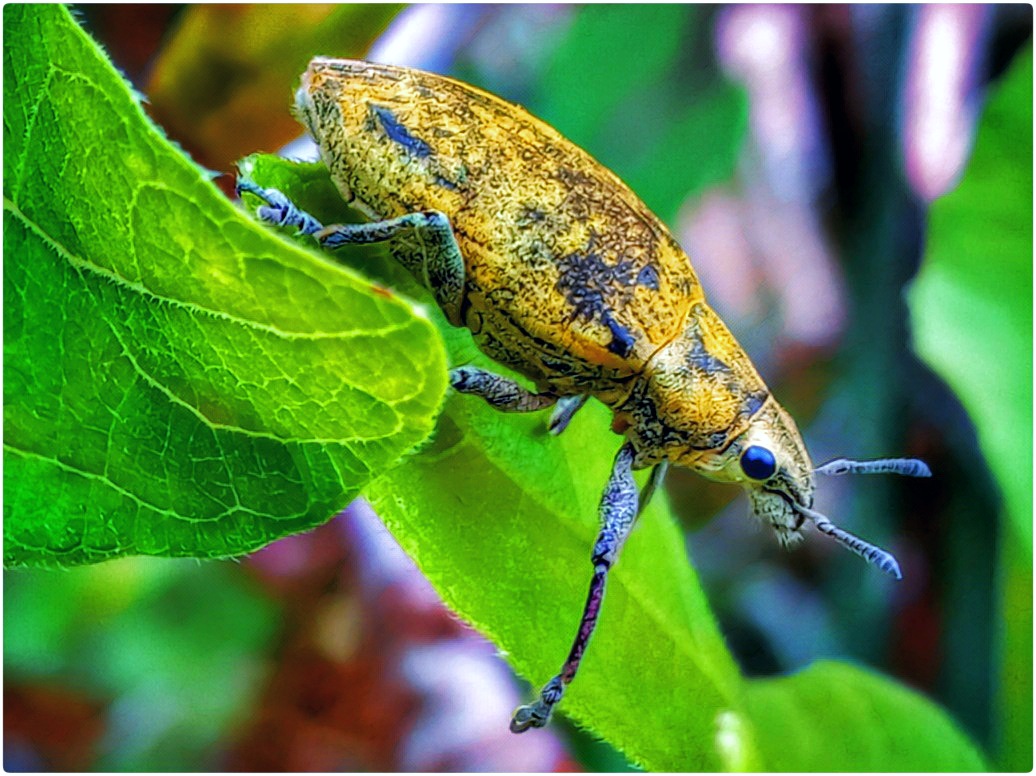
If a vacant land is not covered with wild plants such as cotton plants or the like or other plants that fall into the category of wild plants, of course they don't exist (visible), but if there are units of wild plants then a group of them can be seen, I also wonder how they do it, how they are present in each area, whether it comes from tree trunks or is carried away by something (birds) like tree seeds.
Its presence in every plant, both wild plants and plants cultivated by farmers, is a civilization that is able to survive in every condition and region. They only choose a location that is overgrown with thick leaves in order to be safe from any predators.
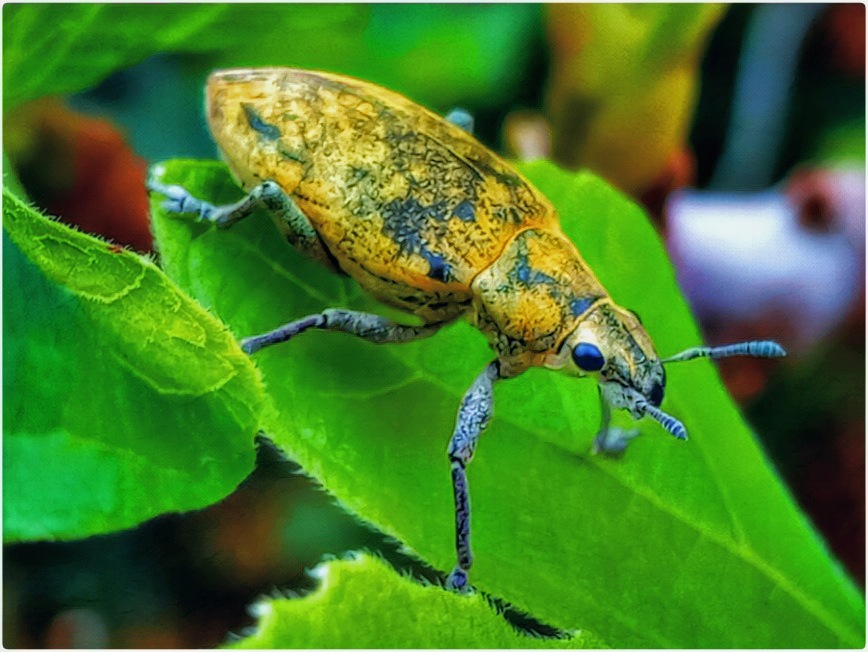
Population within our area
To find out their number in each plant is very easy, of course, it is done manually and of course has results that are often correct. Then how to calculate it or how to find out, of course, it will be conveyed in the next review, of course, in the same comunities and also the same blog....
To be continue...

| Photo and Text Captions | ✎ & 📸 |
|---|---|
| 🅿🅾🆂🆃 🆃🅸🆃🅻🅴 | He is very dashing in a plant |
| 💥 𝕃𝕠caţเØnˢ 𝓅H𝐨𝓣o⌖ | Indonesia |
| 𝗪𝗿𝗶𝘁𝗶𝗻𝗴 𝗗𝗲𝘀𝗰𝗿𝗶𝗽𝘁𝗶𝗼𝗻 | 𝕆𝕨𝕟 𝕨𝕣𝕚𝕥𝕚𝕟𝕘 |

https://twitter.com/Luecas_suci/status/1464161267443126272
The rewards earned on this comment will go directly to the person sharing the post on Twitter as long as they are registered with @poshtoken. Sign up at https://hiveposh.com.
Excellent as always your post dear @luecas very beautiful pictures of this insect....
!discovery 30
Thank you so much @maridmc, has provided support for me, :-)
This post was shared and voted inside the discord by the curators team of discovery-it
Join our community! hive-193212
Discovery-it is also a Witness, vote for us here
Delegate to us for passive income. Check our 80% fee-back Program
Thank you so much @discovery-it